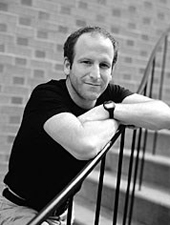Machens, C. K., Wehr, M. S., Zador, A. M. (February 2004) Linearity of cortical receptive fields measured with natural sounds. J Neurosci, 24 (5). pp. 1089-100. ISSN 1529-2401 (Electronic)
Preview |
PDF (Paper)
Zador J Neurosci 2004.pdf - Published Version Download (871kB) | Preview |
Abstract
How do cortical neurons represent the acoustic environment? This question is often addressed by probing with simple stimuli such as clicks or tone pips. Such stimuli have the advantage of yielding easily interpreted answers, but have the disadvantage that they may fail to uncover complex or higher-order neuronal response properties. Here, we adopt an alternative approach, probing neuronal responses with complex acoustic stimuli, including animal vocalizations. We used in vivo whole-cell methods in the rat auditory cortex to record subthreshold membrane potential fluctuations elicited by these stimuli. Most neurons responded robustly and reliably to the complex stimuli in our ensemble. Using regularization techniques, we estimated the linear component, the spectrotemporal receptive field (STRF), of the transformation from the sound (as represented by its time-varying spectrogram) to the membrane potential of the neuron. We find that the STRF has a rich dynamical structure, including excitatory regions positioned in general accord with the prediction of the classical tuning curve. However, whereas the STRF successfully predicts the responses to some of the natural stimuli, it surprisingly fails completely to predict the responses to others; on average, only 11% of the response power could be predicted by the STRF. Therefore, most of the response of the neuron cannot be predicted by the linear component, although the response is deterministically related to the stimulus. Analysis of the systematic errors of the STRF model shows that this failure cannot be attributed to simple nonlinearities such as adaptation to mean intensity, rectification, or saturation. Rather, the highly nonlinear response properties of auditory cortical neurons must be attributable to nonlinear interactions between sound frequencies and time-varying properties of the neural encoder.
| Item Type: | Paper |
|---|---|
| Uncontrolled Keywords: | Acoustic Stimulation methods Animals Auditory Cortex physiology Membrane Potentials physiology Models Neurological Neurons physiology Patch-Clamp Techniques Predictive Value of Tests Rats Rats, Sprague-Dawley Sprague Dawley Reproducibility of Results Signal Processing Computer-Assisted |
| Subjects: | organism description > animal behavior > auditory Investigative techniques and equipment > electrophysiology |
| CSHL Authors: | |
| Communities: | CSHL labs > Zador lab |
| Depositing User: | CSHL Librarian |
| Date: | 4 February 2004 |
| Date Deposited: | 01 Feb 2012 14:53 |
| Last Modified: | 06 Nov 2017 21:20 |
| Related URLs: | |
| URI: | https://repository.cshl.edu/id/eprint/22430 |
Actions (login required)
 |
Administrator's edit/view item |


